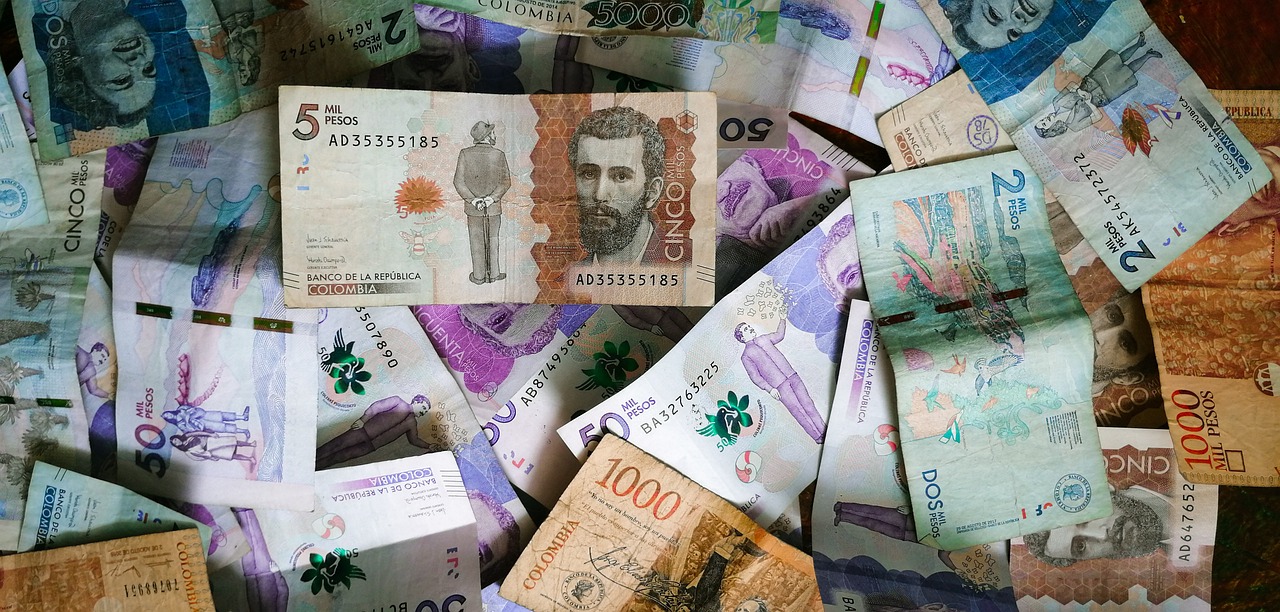Understanding IBAN Numbers: Ensuring Valid Accounts, Wire Transfers, Currency Management, and Secure International Transactions
GPT_Global - 2025-09-18 04:00:12.0 120
How do you confirm that a bank account has an IBAN number before sending money?
In the remittance business, confirming that a bank account has an IBAN (International Bank Account Number) is crucial for ensuring smooth and accurate international transactions. An IBAN is a globally recognized format used to identify bank accounts and simplify cross-border transfers.
To verify if a bank account has an IBAN number, you can first check with the recipient. They should provide the IBAN, which can be found on their bank statement or by contacting their bank. Many banks also offer an IBAN calculator tool online, allowing users to generate or confirm the IBAN based on the account details.
Alternatively, you can use an IBAN validation service. These tools are designed to check if the IBAN is correctly formatted and if it corresponds to the correct bank and branch. Ensuring the accuracy of the IBAN minimizes the risk of delays, errors, or returned payments during the remittance process.
For businesses handling international money transfers, it’s essential to implement proper IBAN validation in your remittance process to guarantee efficient transactions and customer satisfaction. Always double-check the IBAN before sending money across borders to avoid potential issues.

Can you transfer money using an IBAN number between different currencies?
When sending money abroad, many people wonder if they can transfer funds using an IBAN number between different currencies. The answer is yes. An IBAN (International Bank Account Number) is designed to standardize cross-border payments, making it easier and safer to send money across countries, even when different currencies are involved.
When you initiate a transfer with an IBAN, your bank or remittance provider will automatically convert the money into the recipient’s local currency. The exchange rate and transfer fees will depend on the provider, so choosing a reliable remittance service can help you save money and ensure faster delivery of funds.
For individuals supporting family overseas, or businesses managing international clients, IBAN transfers provide a secure and widely accepted solution. Always double-check the recipient’s IBAN to avoid delays, and compare exchange rates before you send money. This ensures you get the best value while safely moving funds across borders.
How do you initiate a wire transfer using an IBAN number?
When sending money abroad, knowing how to initiate a wire transfer using an IBAN number is essential for fast and secure remittances. The International Bank Account Number (IBAN) standardizes cross-border transfers by ensuring each account has a unique identifier, reducing errors and delays.
To start a wire transfer with an IBAN, you’ll need the recipient’s full name, bank name, and IBAN. Log into your online banking portal or visit your bank branch, then enter the IBAN exactly as provided. Double-check the digits carefully, as mistakes can cause failed transfers or delays. Most banks will also request the SWIFT/BIC code for added accuracy in routing funds internationally.
After entering details, review the transfer amount, applicable fees, and exchange rates. Once confirmed, the funds are processed and usually reach the recipient within one to three business days, depending on the banks involved. Using IBAN ensures your remittance arrives safely, making it the preferred method for global wire transfers.
For anyone sending money overseas, understanding IBAN-based wire transfers builds confidence and helps avoid costly errors. Always verify account details with the recipient before initiating the transfer for the smoothest remittance experience.
What role does the IBAN number play in international bank transfers?
The International Bank Account Number (IBAN) plays a crucial role in international bank transfers, simplifying cross-border payments. It is a standardized format that identifies a specific bank account and ensures accurate transactions across borders.
When sending money internationally, the IBAN helps banks verify the account details of both the sender and the recipient. This reduces the chances of errors, delays, and misdirected funds. Without the IBAN, banks would have to rely on alternative methods, which could lead to complications and higher processing times.
For remittance businesses, adopting the IBAN system is essential to streamline international money transfers. By integrating IBAN into their payment infrastructure, these businesses can offer customers faster, safer, and more efficient transactions, making them a preferred choice for global remittances.
In conclusion, the IBAN number is a vital tool in the remittance industry. It enhances accuracy, reduces errors, and ensures that international transfers are processed efficiently. Remittance businesses that embrace this system are better equipped to meet the growing demand for seamless global transactions.
Can an IBAN number be used to track the status of a money transfer?
Sure! Here’s a concise SEO-optimized article for your remittance business: When sending money abroad, many customers wonder if an IBAN number can be used to track the status of their money transfer. An International Bank Account Number (IBAN) is a unique identifier assigned to bank accounts across borders, ensuring that funds are sent to the correct recipient. However, while the IBAN is essential for processing, it does not provide real-time tracking of your transfer. In the remittance process, the IBAN helps banks validate the recipient’s account details, minimizing errors and delays. To check the progress of a transfer, customers usually need a tracking or reference number provided by the money transfer service or bank. These identifiers allow you to monitor the status through customer service channels or online platforms, rather than relying on the IBAN itself. For a smooth international transfer, always ensure that the IBAN provided is correct. Combining accurate account information with a trusted remittance service will help your money arrive quickly and securely. While the IBAN cannot directly track your transaction, it plays a vital role in ensuring your funds reach the right destination without issues.Do all countries use IBAN numbers for transferring money internationally?
In today's globalized world, sending money across borders has become simpler than ever. However, one common question remains: "Do all countries use IBAN numbers for transferring money internationally?" The answer is no. While the International Bank Account Number (IBAN) system is widely adopted across Europe and many other parts of the world, not all countries use it.
IBAN numbers help ensure that cross-border payments are processed smoothly, minimizing errors and delays. Countries like the United States, Canada, and some others in Asia and Africa do not use IBAN numbers. Instead, they rely on different systems like SWIFT codes, routing numbers, or other local payment identifiers.
For businesses and individuals involved in international money transfers, it's important to understand the requirements of each country. Some may require only an IBAN, while others may ask for a combination of different identifiers. When sending money abroad, always check the specific payment guidelines for the recipient's country to ensure a smooth transaction.
By staying informed about the various international money transfer protocols, you can avoid unnecessary delays and ensure efficient remittance services for your customers.
How do I find the IBAN number of a recipient before transferring money?
When transferring money internationally, it's crucial to have the recipient's IBAN (International Bank Account Number) to ensure the funds are correctly deposited. The IBAN is a unique identifier for bank accounts, typically used in countries that are part of the European Union and other regions. But how do you find the IBAN number of the recipient?
First, you can ask the recipient to provide their IBAN directly. Most individuals and businesses know their IBAN, as it is commonly used for international transactions. If they don’t know it, they can find it on their bank statement or by logging into their online banking account.
If you're unsure where to locate it, many banks also offer tools on their website to help customers generate or find their IBAN. Additionally, you can check with the recipient’s bank directly, but they may require the person’s authorization to release this information.
In some cases, the IBAN may be visible on the recipient’s invoices or payment requests, especially for businesses. Always verify the IBAN before proceeding with the transaction to avoid costly mistakes.
What steps do I need to follow to complete a money transfer using an IBAN number?
To complete a money transfer using an IBAN number, follow these essential steps. First, ensure that you have the correct International Bank Account Number (IBAN) for the recipient. The IBAN is a unique identifier used in international transactions to help prevent errors and ensure your funds reach the correct account. You can obtain this number directly from the recipient or through their bank.
Next, visit your bank or use their online banking platform. Select the “international transfer” option, and enter the recipient’s IBAN, along with their full name, address, and the bank’s SWIFT/BIC code if required. Double-check these details to avoid mistakes that could delay the transfer.
After entering the necessary information, specify the amount to send and select the currency. You will then be presented with any applicable fees and the estimated delivery time. Review all the details carefully before confirming the transfer.
Finally, once you confirm the payment, your bank will process the transaction. The funds should arrive in the recipient's account within the estimated time, though it can take a few business days depending on the banks involved and the countries.
About Panda Remit
Panda Remit is committed to providing global users with more convenient, safe, reliable, and affordable online cross-border remittance services。
International remittance services from more than 30 countries/regions around the world are now available: including Japan, Hong Kong, Europe, the United States, Australia, and other markets, and are recognized and trusted by millions of users around the world.
Visit Panda Remit Official Website or Download PandaRemit App, to learn more about remittance info.


